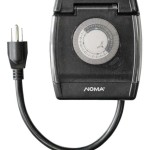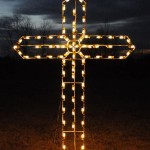Outdoor Automatic Light Control: A Guide to Essential Aspects
Automated outdoor lighting systems bring a host of benefits, enhancing safety, security, and aesthetic appeal while minimizing energy consumption. To reap these advantages, it's crucial to understand the essential aspects of outdoor automatic light control.
Light Sensors
Light sensors are the eyes of any automatic lighting system, detecting ambient light levels to determine when to activate and deactivate the lights. There are two primary types of light sensors used in outdoor applications:
- Photocell Sensors: These sensors are sensitive to a wide range of light wavelengths and can be used in both daytime and nighttime conditions.
- PIR (Passive Infrared) Sensors: PIR sensors detect heat radiation emitted by moving objects, allowing lights to be triggered only when motion is detected.
Control Logic
The control logic determines how the lights respond to the signals received from the light sensors. It can be implemented using various technologies, including:
- Standalone Timers: These simple timers turn lights on and off at preset times regardless of light conditions.
- Photocell Relays: Photocell relays switch lights based on the output from a photocell sensor.
- Smart Controllers: Smart controllers offer advanced functionality, allowing for customization of lighting schedules, motion detection settings, and integration with other smart devices.
Light Fixtures
The choice of light fixtures plays a significant role in determining the effectiveness and efficiency of the lighting system. Consider the following factors when selecting light fixtures:
- Type of Light Source: Choose between incandescent, fluorescent, LED, or solar lights based on desired brightness, energy efficiency, and lifespan.
- Beam Pattern: Select fixtures that provide the appropriate beam pattern for the intended application, such as wide-angle for general illumination or narrow-beam for spot lighting.
- Durability: Outdoor light fixtures must be rated for outdoor use and resistant to weather conditions.
Environmental Considerations
Outdoor lighting can have an impact on the environment. It's important to consider the following factors when designing an automatic light control system:
- Light Pollution: Choose fixtures that minimize upward light spillage to reduce light pollution.
- Energy Consumption: Opt for energy-efficient light sources, such as LEDs, to minimize electricity consumption.
- Wildlife Impact: Avoid using bright lights that may disturb nocturnal wildlife.
Maintenance and Troubleshooting
Regular maintenance and troubleshooting are essential for ensuring the proper functioning of an outdoor automatic light control system. Consider the following tips:
- Inspect light sensors and fixtures regularly for cleanliness and damage.
- Check control logic settings to ensure they are aligned with desired operation.
- If lights are not functioning as expected, refer to the manufacturer's instructions for troubleshooting steps.
By understanding and implementing these essential aspects, you can create an effective outdoor automatic light control system that enhances safety, security, and aesthetics while minimizing energy consumption.

Automatic Light Control Switch As 06 Road Controller Outdoor Sensor Com

Hardwire Post Eye Light Control With Photocell Automatic Sensor Switch Ledwholers

Automatic Light Control Switch As 06 Road Controller Outdoor Sensor Com

Automatic Light Control Switch As 10 Road Controller Outdoor Sensor Com

Automatic Outdoor Light Switch Voltage Standardized

Automatic Light Controller Outdoor Panel Gelco Electronics Pvt Ltd

Hardoll 100w All In One Solar Street Light Led Outdoor Waterproof Lamp

Amicismart Automatic On Off Street Light Switch Controller Ac 220v 10a Photocell Sensor For Outdoor Lights Smart In Buy

Automatic Light Controller Outdoor Panel Gelco Electronics Pvt Ltd

Waterproof Photocell Automatic Auto On Off Street Light Switch Outdoor Automatically With Sun Ac 220v 50 60hz 10a Photo Control Photoswitch Sensor







